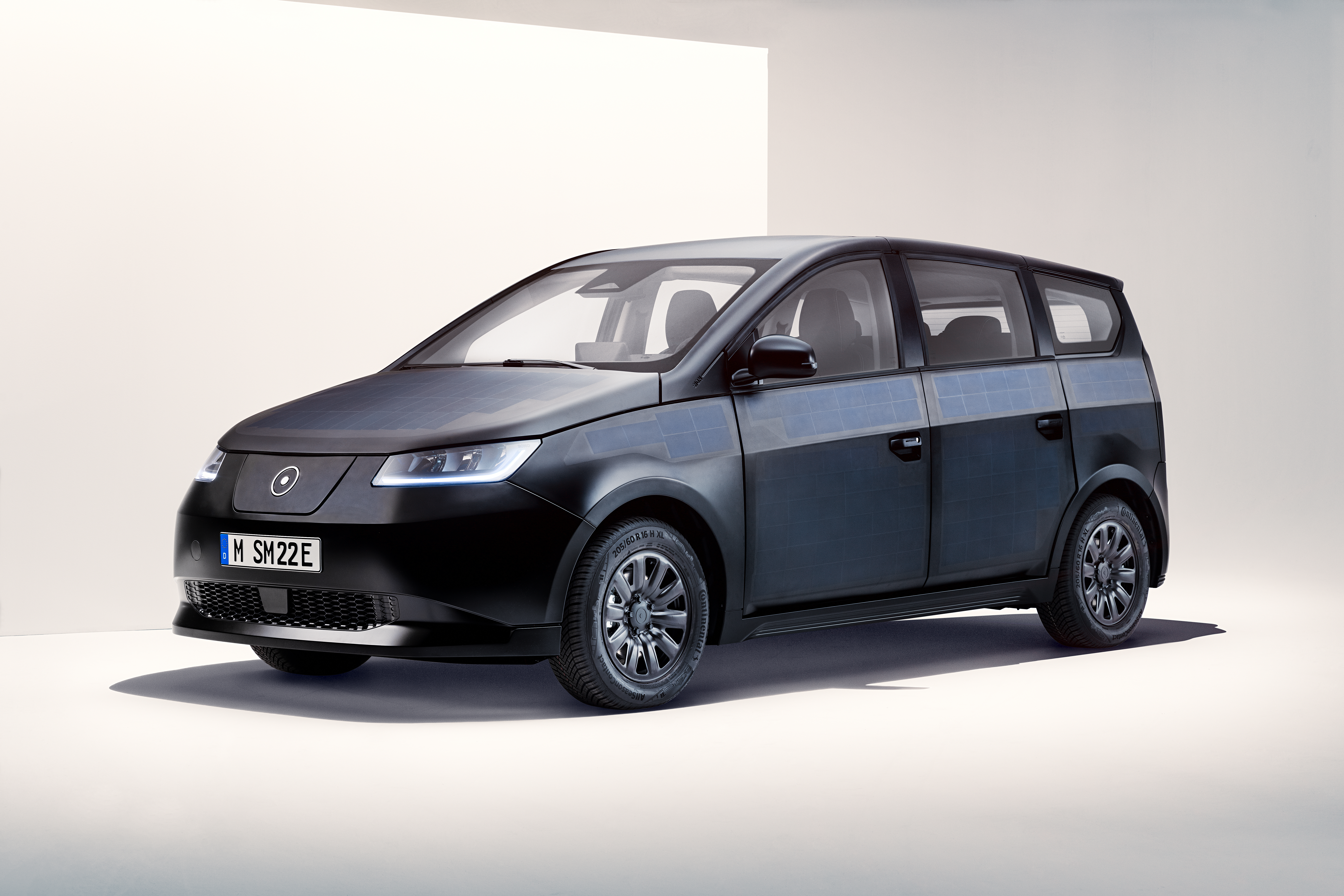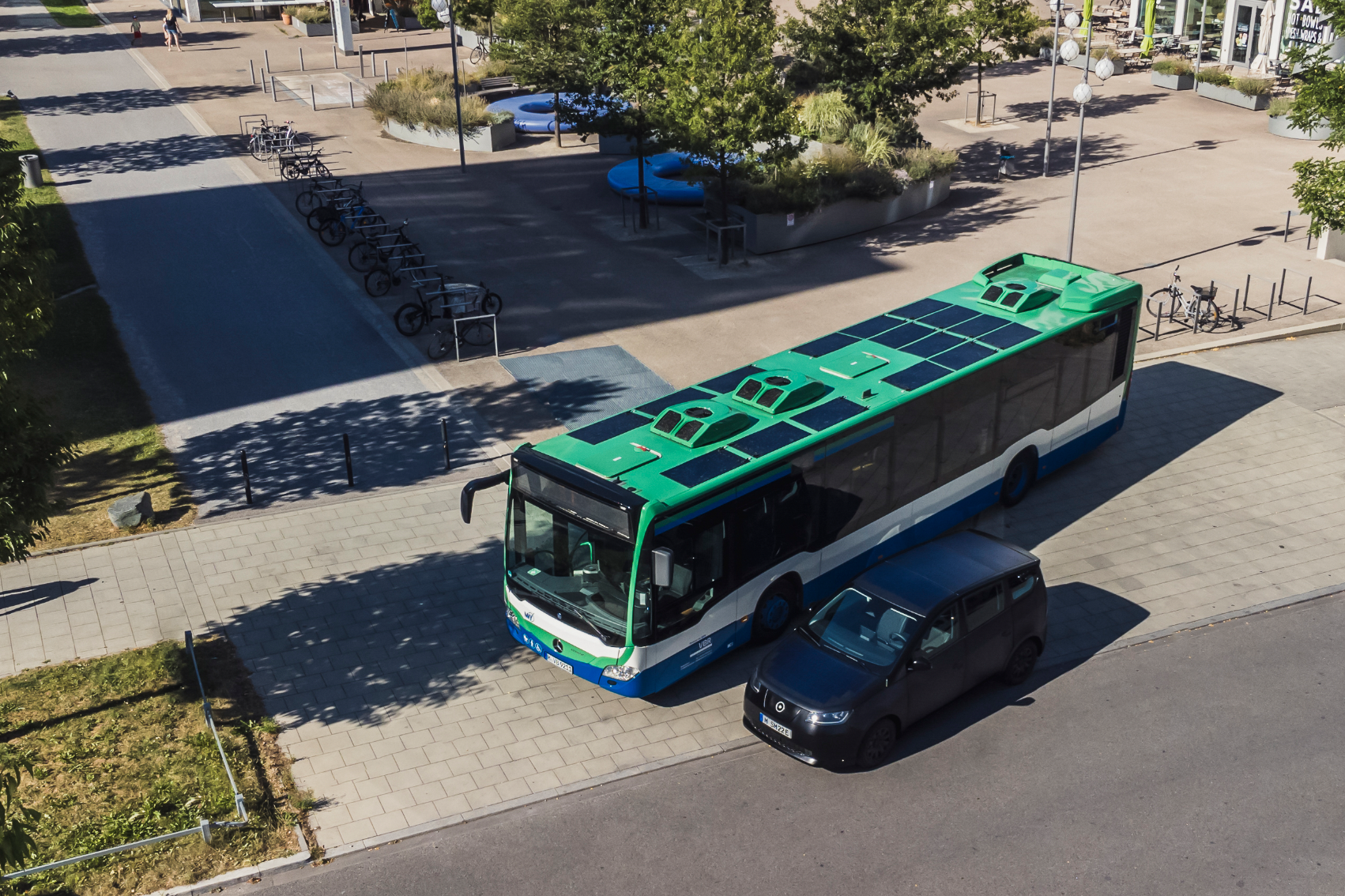Sono Motors unveiled this week the final production design of the Sion EV, a solar electric vehicle that’s been in the making since the Munich-based startup launched in 2016.
It’s been a long and bumpy road for Sono Motors, a journey that involved a couple of crowdfunding campaigns, a near insolvency and a debut on the Nasdaq exchange as a publicly traded company.
The solar-power fruits of those rather tumultuous labors were shown off at its bustling “Celebrate the Sun” Community event. The Sion solar-powered EV took center stage. However, another product called the Solar Bus Kit, a series of solar panels that are designed to be retrofitted onto 12-meter public buses, suggests the company has more ambitious plans beyond one passenger vehicle.
The question, of course, is can Sono Motors produce and sell the EV at volume? And how?
Sono aims to begin deliveries of the Sion in the second half of 2023 to customers in Germany, Austria and Switzerland. The company did not provide guidance on how many Sions would be delivered next year. The only metric it has shared is that it expects to make 43,000 Sions per year with a production capacity of 257,000 over seven years, according to a company spokesperson.
However, even the most well-funded EV startups have had trouble making it to production recently. Sono has had to combat a range of challenges since going public in November last year, from a plummeting stock price to switching manufacturing partners, and its path forward to production and delivery will likely continue to be bumpy given current market and supply chain uncertainty.
Let’s break down what this company is up to:
The Sion’s final production design

The Sion will consist of 456 integrated solar half-cells that will collect power from the sun and enable self-sufficiency on shorter journeys. Image Credits: Sono Motors
The Sion is a compact, five-door, family-friendly hatchback that will sell for €25,126 (~$25,628 at today’s conversion). Its outer shell will consist of 456 integrated solar half-cells that will collect power from the sun and enable self-sufficiency on shorter journeys. Of course, the vehicle will still use a traditional charger to refuel, but the constant drip feed of solar should be enough to take care of most urban commutes, the company says.
The car’s 54 kWh lithium iron phosphate battery has a range of about 190 miles. Sono expects the energy generated by the solar cells to extend that by an average of 70 miles, and up to 152 miles, each week. In addition, the Sion is built with bidirectional charging technology, which allows commuters to use energy stored in the battery (~11 kW) to power homes or other electronic devices.
[gallery ids="2360114,2360119,2360115"]
Other enhancements to the final design’s exterior and interior includes a sleeker, cleaner-looking vehicle, according to Sono.
The exterior has new headlights, including a new daylight strip, rear lights, a rear camera, a bottom sideline design and a revamped charging lid in front. There are also new door handles, which photos show have the words “made to be shared” — a nod to Sono’s hope to get this car into fleets.
At CES 2021, Sono said it would license its solar body panel technology to other companies as an additional source of revenue, and this new bus kit is a part of that move to diversify the business.
Since going public, Sono says it has ongoing letters of intent, pilots and prototypes for 19 companies that are implementing the company’s solar technology on a variety of vehicle architectures, like buses, trailers, trucks and electric transporters. For example, Sono recently piloted a solar bus trailer in Munich to provide backup power for public transport. Sono has also partnered with the Reefer Group, a manufacturer of refrigerated semi-trailers, to build a solar trailer for testing.
The company said its B2B solar business is already generating revenue, more details of which will be shared during the company’s earnings call in September. Sono’s stock has plummeted since its debut, losing close to 93% of its value, so the company will definitely need to earn another source of revenue as it revs up for production next year.
Why Sono stock has taken a hit
When Sono Group, the parent company of Sono Motors, began trading, it opened at $20.06 after the IPO was initially priced at $15. Shares hit a high of $38.74 before the market closed on its first day. At the time of this writing, Sono Group is trading at $2.64, a slide that has continued even after the company revealed the production version of the Sion.
It seems the buzz around EV startups has started to fizzle.
In May, Sono closed its previously announced underwritten follow-on offering of 10 million ordinary shares, with an additional 1.5 million shares available for the underwriters — which include Cantor Fitzgerald and B. Riley Securities — at an even greater discount.
Sono said it gained $40 million in gross proceeds from this offering, which it used to help fund the start of production of its Sion, but investors are likely to see the offering as one that devalues shares to an even greater extent.
"motors" - Google News
July 27, 2022 at 02:13AM
https://ift.tt/MC1JTqo
Sono Motors reveals final design of its solar-charging Sion EV - TechCrunch
"motors" - Google News
https://ift.tt/rsReXLU
https://ift.tt/nPRC34a
Bagikan Berita Ini
















0 Response to "Sono Motors reveals final design of its solar-charging Sion EV - TechCrunch"
Post a Comment